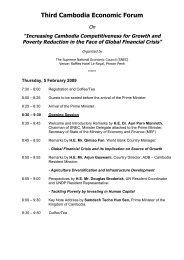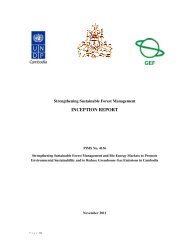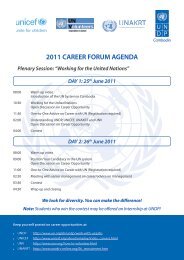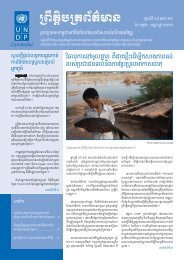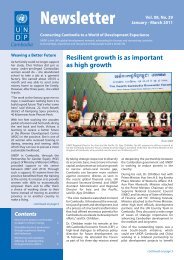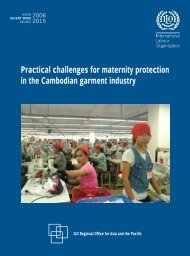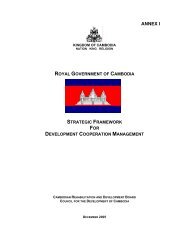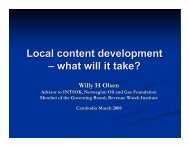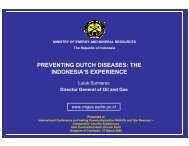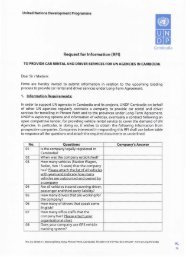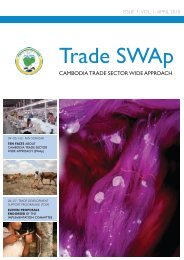UN Analysis Final.pdf - United Nations in Cambodia
UN Analysis Final.pdf - United Nations in Cambodia
UN Analysis Final.pdf - United Nations in Cambodia
You also want an ePaper? Increase the reach of your titles
YUMPU automatically turns print PDFs into web optimized ePapers that Google loves.
6.2.1 SEXUAL AND REPRODUCTIVE HEALTH<br />
Age at first marriage<br />
The age at first marriage is l<strong>in</strong>ked to women’s reproductive health and maternal mortality. The average<br />
age for first marriage <strong>in</strong> <strong>Cambodia</strong> is relatively young compared to other countries <strong>in</strong> the region (<strong>UN</strong>ICEF<br />
2005), at 20 for women and 22 for men. They are slightly higher <strong>in</strong> urban areas, 21 for females and 24 for males<br />
(CDHS, 2005). Accord<strong>in</strong>g to CDHS 2005, the median age of first marriage for women has decreased about<br />
half a year over the past generation.<br />
Unplanned pregnancy<br />
Accord<strong>in</strong>g to CDHS 2005, approximately 8 per cent of <strong>Cambodia</strong>n women aged 15-19 have become mothers<br />
or are currently pregnant with their first child. About 23 per cent of young married women have already<br />
given birth by the age of 19 (Figure 6.1). Early childbear<strong>in</strong>g is far more common <strong>in</strong> rural areas, where 8.3<br />
per cent of 15-19 year-olds had given birth, compared to only 6.0 per cent <strong>in</strong> urban areas (CDHS 2005).<br />
FIGURE 6-1. PERCENTAGE OF CURRENTLY MARRIED WOMEN AGED 15-19 WHO HAVE BEG<strong>UN</strong> CHILDBEARING, 2005<br />
25<br />
22.7<br />
20<br />
Percent<br />
15<br />
10<br />
12.2<br />
5<br />
0<br />
15<br />
Source: CDHS 2005<br />
2.1<br />
6.1<br />
Age<br />
In geographic terms, the percentage of young married women <strong>in</strong> mounta<strong>in</strong>/forest or remote regions<br />
who have begun childbear<strong>in</strong>g <strong>in</strong>creased between 2000 and 2005 (Figure 6-2). The highest proportion<br />
was found <strong>in</strong> Mondolkiri/Ratanakiri, where childbear<strong>in</strong>g <strong>in</strong>creased from 19.8 per cent <strong>in</strong> 2000 to 21.8<br />
per cent <strong>in</strong> 2005. Other <strong>in</strong>creases over the same period were measured <strong>in</strong> Odar Meanchey (6.5 per cent to<br />
15.4 per cent), Preah Vihear/Steung Treng (7.1 per cent to 13.4 per cent) and Kratie (7.8 per cent to<br />
12.9 per cent). Increases also occured <strong>in</strong> prov<strong>in</strong>ces with<strong>in</strong> the Tonle Sap zone, <strong>in</strong>clud<strong>in</strong>g Kampong Chhnang,<br />
Kampong Cham and Siem Reap.<br />
Situation <strong>Analysis</strong> of Youth <strong>in</strong> <strong>Cambodia</strong><br />
67




